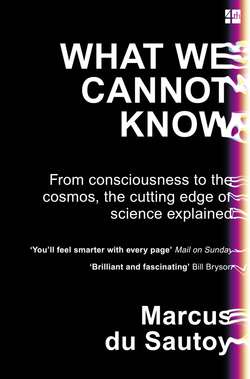Читать книгу What We Cannot Know: Explorations at the Edge of Knowledge - Marcus Sautoy du - Страница 26
THE DEVIL IN THE DECIMALS
ОглавлениеDespite Poincaré being credited as the father of chaos, it is striking that this sensitivity of many dynamical systems to small changes was not very well known for decades into the twentieth century. Indeed, it really took the rediscovery of the phenomenon by scientist Edward Lorenz, when he, like Poincaré, thought he’d made some mistake, before the ideas of chaos became more widely known.
While working as a meteorologist at MIT in 1963, Lorenz had been running equations for the change of temperature in a dynamic fluid on his computer when he decided he needed to rerun one of his models for longer. So he took some of the data that had been output earlier in the run and re-entered it, expecting to be able to restart the model from that point.
When he returned from coffee, he discovered to his dismay that the computer hadn’t reproduced the previous data but had generated very quickly a wildly divergent prediction for the change in temperature. At first he couldn’t understand what was happening. If you input the same numbers into an equation, you don’t expect to get a different answer at the other end. It took him a while to realize what was going on: he hadn’t input the same numbers. The computer printout of the data he’d used had only printed the numbers to three decimal places, while it had been calculating using the numbers to six decimal places.
Even though the numbers were actually different, they differed only in the fourth decimal place. You wouldn’t expect it to make that big a difference, but Lorenz was struck by the impact such a small difference in the numbers had on the resulting data. Here are two graphs created using the same equation but where the data that is put into the equations differ very slightly. One graph uses the input data 0.506127. The second graph approximates this to 0.506. Although the graphs start out following similar paths, they very quickly behave completely differently.
The model that Lorenz was running was a simplification of models for the weather that analysed how the flow of air behaves when subjected to differences in temperature. His rediscovery of how small changes in the way you start a system can have such a big impact on the outcome would have huge implications for our attempts to use mathematical equations to make predictions into the future. As Lorenz wrote:
Two states that were imperceptibly different could evolve to two considerably different states. Any error in the observation of the present state – and in a real system, this appears to be inevitable – may render an acceptable prediction of the state in the distant future impossible.
